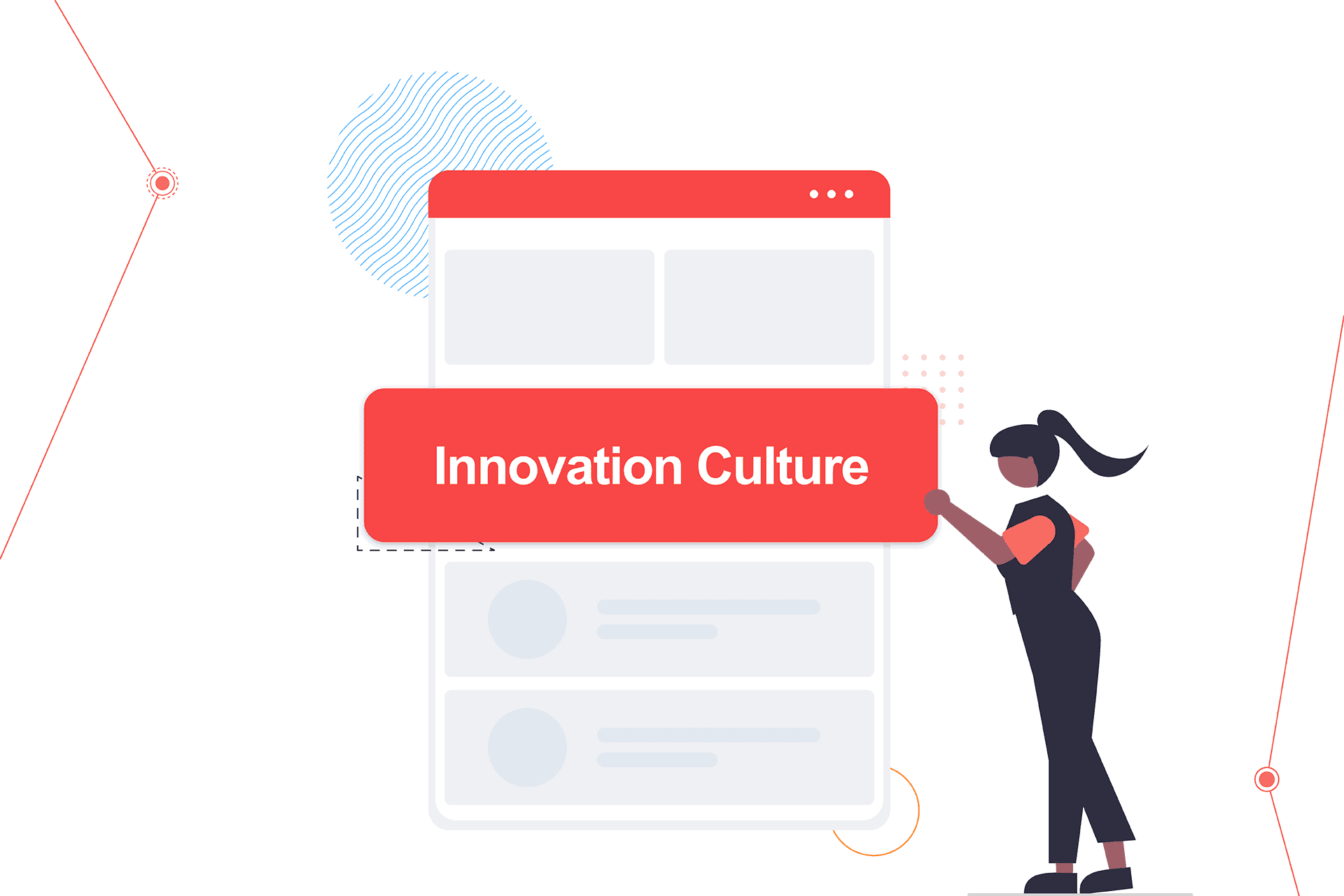When we think of implementing innovation in companies, there are a few brands like Apple and Tesla that might come to mind quickly. But the truth is, innovation is everywhere. Innovation became the norm not only within technology companies but in many other areas such as biomedical, finance, agriculture and pretty much anywhere you can think about.
Table of Contents
While most of the time we only see the end result and we take it for granted, it’s essential to go beyond the surface in order to understand the fundamentals of an innovative process.
We believe that it’s the commitment to adopt and sustain an internal innovation culture that will later show results to clients and partners.
In this article, we look into various aspects of the culture of innovation founded on an innovation-centred mindset and how your company can achieve it too.
But first things first…
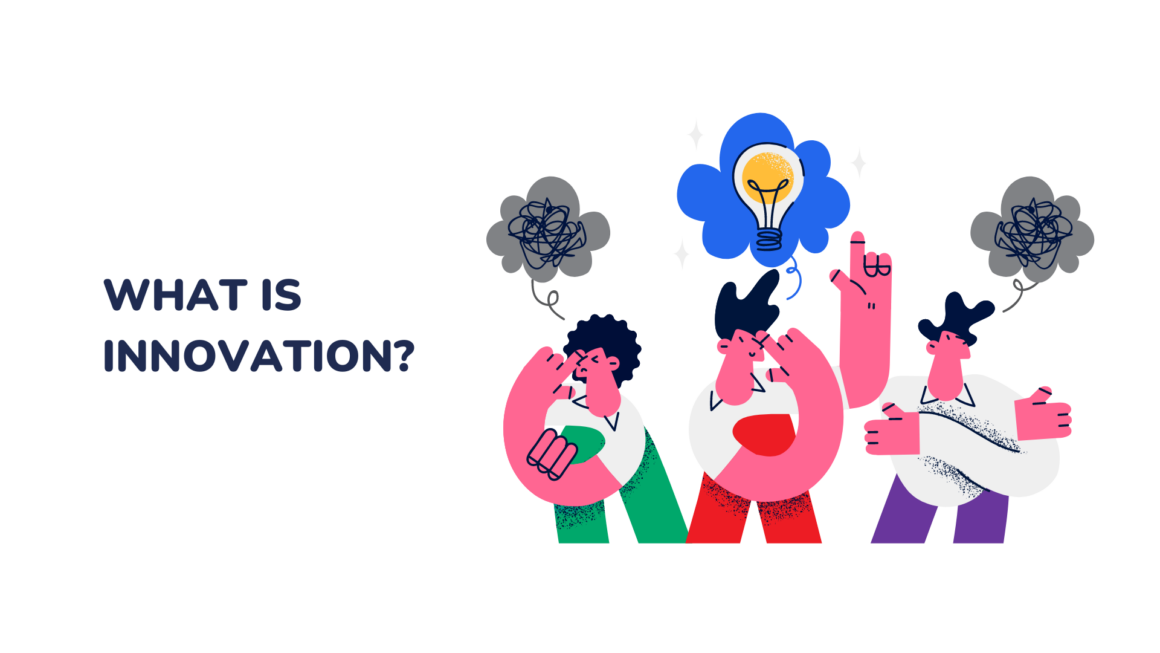
What Is Innovation?
Simply put, innovation is the means to introduce a new idea to your company. It can be a new recruitment process, manufacturing, monitoring… you name it. Here are some examples of innovation processes:
- improving or replacing business procedures to increase efficiency and productivity, or to enable the business to extend the range or quality of existing products and/or services.
- developing entirely new and improved products and services – often to meet rapidly changing customer or consumer demands or needs.
- adding value to existing products, services or markets to differentiate the business from its competitors and increase the perceived value to the customers and markets.
We often mistakenly think that an innovative idea should push the limits of imagination. Which is not entirely true. Presenting your team with a new, improved process is also innovation.
Another small aspect that people get confused with, is associating innovation with invention.
Inventing and innovation are often associated, but they are two different things: inventing does not automatically lead to innovation. Some inventions are truly innovative – and these are usually the ones we hear of, and this is probably why we associate the two terms.
Companies usually consider “technology” a synonym for innovation. But you don’t necessarily need technology to innovate.
Innovation can come in the form of new product development, introducing a leadership team or an upgraded business strategy.
A simple example is when supermarkets learnt to multiply their profit on a piece of fruit by pre-slicing it for today’s on-the-run consumer – it was a successful implementation of an innovative idea.
It looks like innovation can also come in small packages. But what leads the way to innovation? Here are the 5 pillars we found that an innovative company adopts.
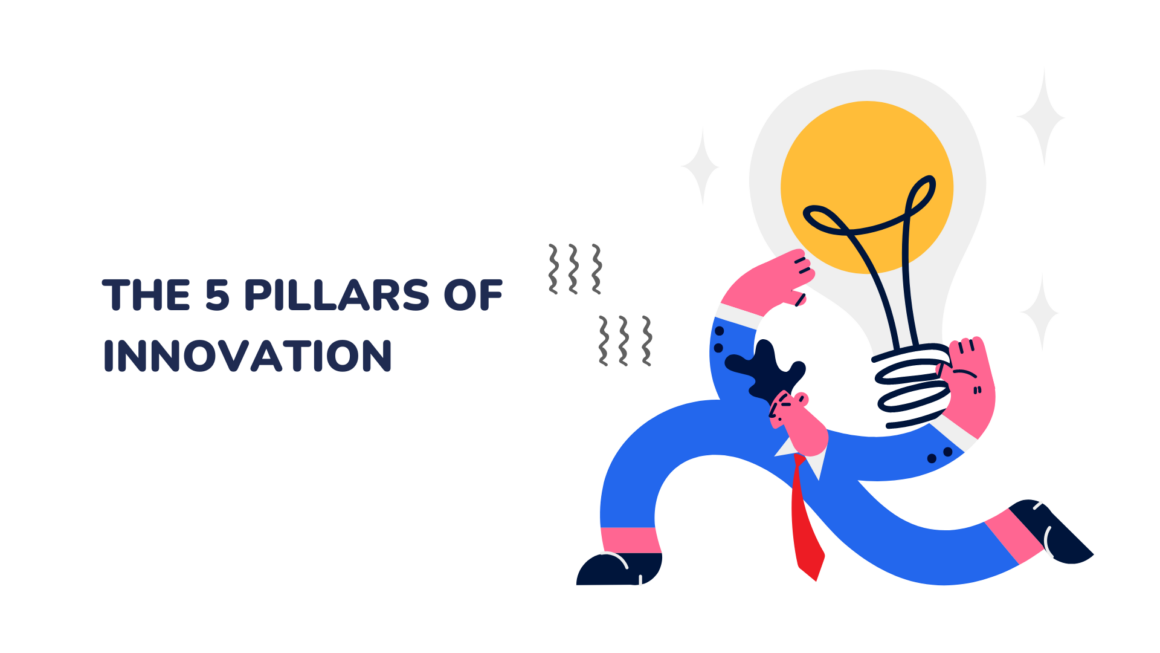
The 5 Pillars of Innovation in a Company
To better understand what it takes to become an innovative company, we looked at the most common tactics leaders adopt in order to create and sustain an innovation-oriented culture.
Although an innovation-oriented company is the end goal for many, according to Eurostat only around half of the enterprises with 10 employees or more reported innovation activity. So, according to the report, 1 in 2 SMEs struggle to create an innovation-centred environment.
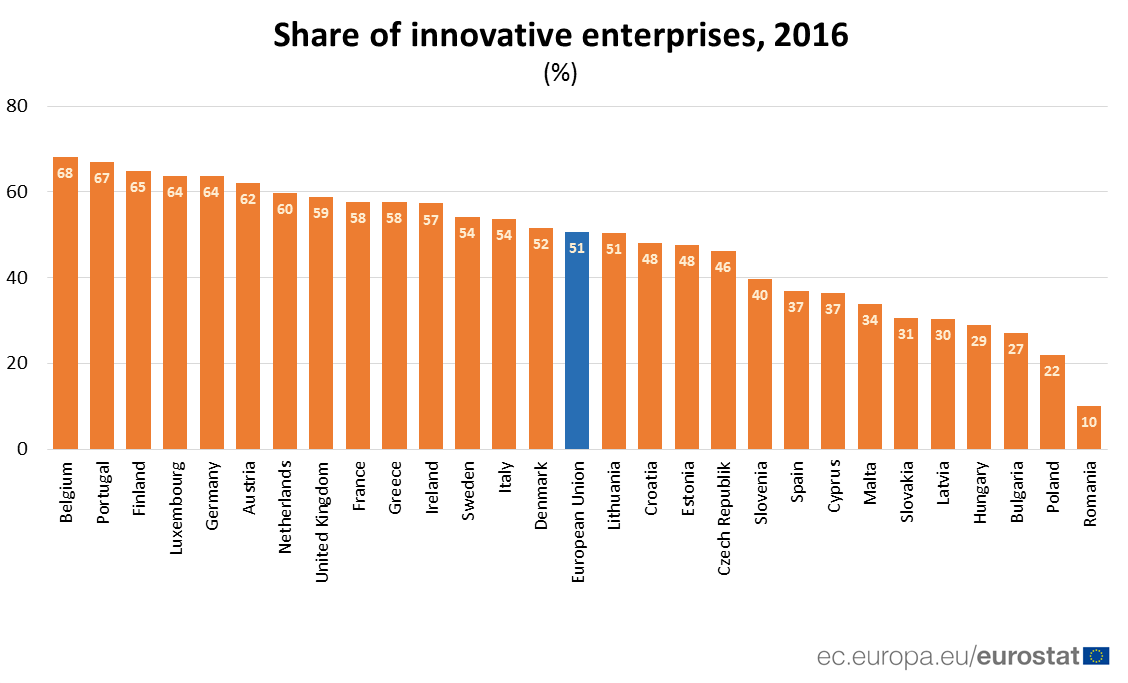
Here are the most common steps to implementing innovation that companies take.
A Sharp Definition of Innovation
This might sound like an easy thing to do, but it’s not that simple to put into practice.
In order to create a strong definition of innovation, you need to understand where you stand, what you stand for and how your team and partners understand innovation.
Without a clear set of expectations, it will prove very challenging to identify a definition that will work for you and your organisation.
Having an agreed-upon definition of innovation will enable you to actually measure its progress and build an environment around it.
Clear Innovation Metrics
Strictly correlated with the previous point, in order to see if your company is an innovative one, you should be able to track its progress.
With a clear definition of innovation in mind, you can start to sketch some innovation metrics that can tell you more about the direction you’re going.
Although innovation may seem a very abstract concept, thus difficult to track, Harvard Business Review suggests 8 metrics you could include in your innovation dashboard:
- Inputs: resources (time, money, people) invested and the number of ideas that enter the innovation pipeline
- Throughputs: the number and the quality of the ideas that passed the initial screening and are active in the pipeline
- Outputs: the number of ideas that come to reality and are actually implemented and bring impact to your organisation
- Leadership: percentage of the executive’s time invested in mentoring and developing pro-innovation behaviour
- Competence: percentage of employees who have been trained as “innovators”. Also, people who possess the skills to become informal innovators as well
- Climate: the environment the organisation sets for its employees in order to facilitate the innovation process
- Efficiency: ratio changes between the outputs and inputs of innovation
- Balance: a healthy mix of types of innovations (product, service, recruitment, learning, etc.) over various time periods
Employees Who Think Like Innovators
You would be surprised how many companies overlook the internal growing and changing environment.
In order to seed innovation in your organization, you have to make sure it’s truly ingenious at its core. And that means your team.
Investing in your employees, in order to help them become innovators is vital.
If you want to upgrade your team’s innovation skills, look into these aspects:
- Challenge their mindset – executives usually get caught up in the daily routine and lose touch with certain aspects. Teach your team members to identify these routine blockers and challenge them.
- Focus on “unpopular” trends – it’s usually better to keep an eye on trends that don’t get that much hype. Encourage your team to follow these trends from the very beginning. They can get a better understanding of the whole evolution and come up with new ideas and improvements themselves
- Acknowledge and reward – getting things started is probably one of the hardest parts. People usually resist change, but when their effort is acknowledged and rewarded, things will slowly work out. Make sure you identify, praise and reward the first sparks of innovation you see within your organisation
True Innovation Leaders
It might prove a real challenge to harness a true innovation-oriented culture without a team of innovation management leaders.
While things can look more or less formal from company to company, each leader in your team should be trained towards the culture you want to grow, so they can pass it on to their team members.

An innovation leader should:
- Encourage his team members to come up with new ideas and take action to actually implement them
- Not judge any of the ideas brought to the table
- Be a mentor when it comes to adopting an innovation mindset
- Create opportunities for their teams to implement their ideas
- Offer time and money for innovation
- Making sure there is a flawless innovation process in place
The list could continue, and it should be adapted to your unique vision.
True innovation leaders can nurture and grow a powerful innovation-oriented culture.
Innovation-Friendly Processes
There’s nothing worse than having the time, energy and money to put into something, but to be cut off due to too many procedures or the lack of them.
Since driving innovation is quite an abstract goal for many, it’s easy to overdo it or do nothing at all.
If you already have a dynamic, creative team that brings a lot of ideas to the table, make sure you give them the support they need to implement their ideas.
Make budgeting and time management easy and accessible for them. Be transparent and make sure people know how the innovation practice looks in your organisation.
If there are too many processes in place, people might feel discouraged to pursue their ideas and their implementation.
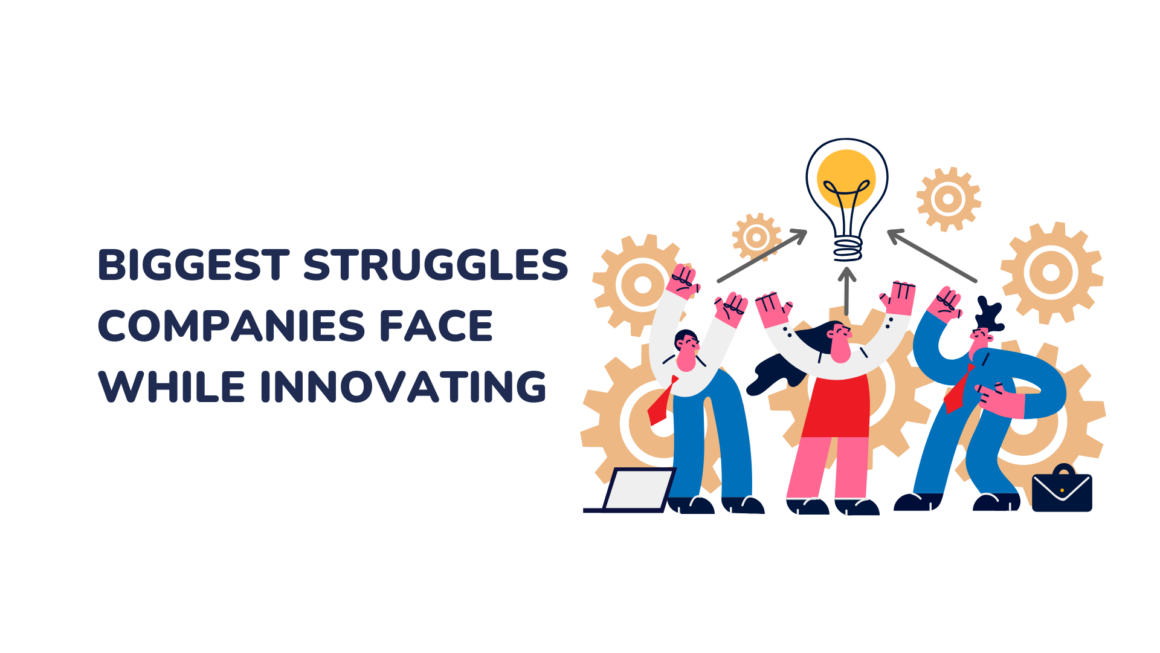
Biggest Struggles Companies Face while Innovating
Most companies find growing an internal innovation mindset the hardest thing to do. More than 1 in 2 companies find it challenging to foster an internal culture for experiments and innovation.

Lack of Clear Innovation Strategy
Coming back to the abstract nature of innovation, many companies fail to define a clear innovation strategy that employees can rely on.
Not knowing what innovation truly means for you and your team, can abruptly stop all your efforts of growing an innovative environment within the organisation.
It all goes back to the 5 pillars of innovation we mentioned above. People need to understand what the vision is in order for them to come on board. Specific metric measures and incentives are also important and a must-have thing to have, in order to start growing.
Insufficient Resources Allocated
3M famously introduced the 15% rule a few decades ago, which turned into an innovation standard rule. The company allocated 15% of its employees paid time to create, doodle and find the creativity needed in order to come up with a new idea. Google implements a similar incentive, in order to help their employees grow.
Many companies don’t allocate enough resources (if any at all).
Dedicated time and rewards for those who come up with ideas are mandatory incentives if a company wants to foster an internal innovation culture.
Talk with your team and learn more about their expectations and needs.
Giving up Too Soon
Thomas Edison famously said that “Many of life’s failures are people who did not realize how close they were to success when they gave up.”
To come up with an innovative idea, you have to take risks and embrace the fact that not all ideas will work or will be good.
Building and maintaining an innovation culture are two different things. Make sure that you celebrate failures with your team too. This will show them that each idea and effort is appreciated and important. Don’t let them give up too soon.

Where Do You Stand?
We hope that we managed to give you a good understanding of what innovation could look like from the inside and what action steps you can take towards it.
It can be very challenging to put people who have done things a certain way for years, to come up with things that disturb their day-to-day working routine.
Sometimes it’s best to bring a fresh pair of eyes that can pragmatically analyse and make suggestions on how to set things up. Usually, people tend to be more open toward suggestions and improvements from someone who’s from the outside and is not caught up in daily office habits.
There are many different ways of fostering innovation within an organisation. An external consultant, business coach, or business analyst could really bring a visible impact on your team. From there, you can implement innovation actions in your own rhythm. It takes time and patience to find the right approach for you, but the waiting will pay off.


